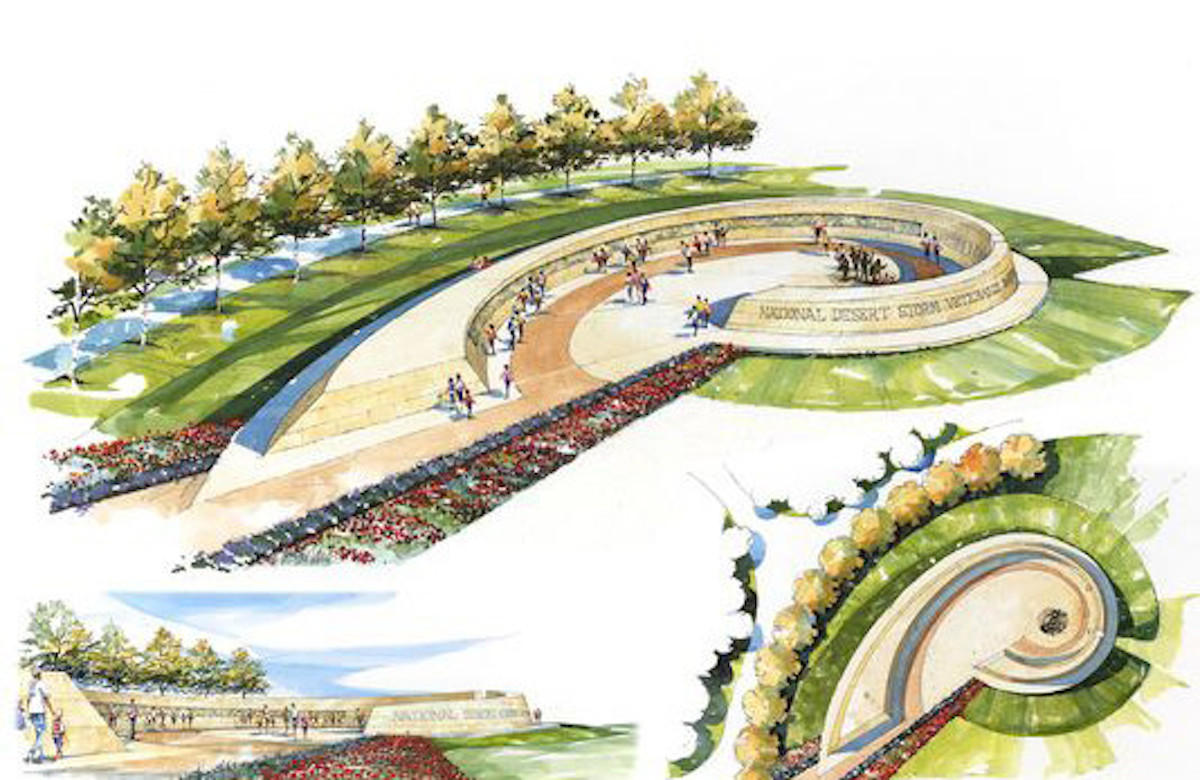WASHINGTON — With the the 25th anniversary of start of Operations Desert Shield and Desert Storm on Sunday, a memorial dedicated to those who served in the war still remains years away from becoming a reality.
“Operation Desert Storm/Desert Shield is the largest American war of the 20th century without a memorial,” said Scott Stump, CEO of The National Desert Storm Memorial Foundation and a Marine veteran who served in the war. “I was one of the lucky ones. But there are almost 400 people who didn’t come back.”
Congress approved in December 2014 the creation of the memorial on federal land in Washington, D.C..
The foundation hired a fundraising firm a few months ago to help reach the $25 million goal that’s needed to build the memorial, which will not use federal funds. Construction cannot begin until fundraising is completed.
While the monument will be built in Washington, the specific location is yet to be decided. The preliminary design of the monument looks like a hook, which symbolizes “the strategy employed in 1991 to swing around the left flank of the Iraqi army,” according to the foundation’s website. However, the final design and location will require the approval of the National Park Service.
For decades, Gulf War veterans longed for a memorial to remember their sacrifices; nearly 400 coalition troops — including 294 U.S. service members — died, and hundreds more were wounded, according to the foundation and the Defense Department.
In August 1990, Iraq invaded its smaller neighbor Kuwait, an action that was unexpected by the international community. In response, an American-led coalition launched an operation composed of nearly 700,000 troops, 470,000 of whom were from the United States.
Two years before invading Kuwait, Iraq ended its eight-year war with Iran, leaving it with a huge debt. By controlling Kuwait, Iraq would have significantly increased its share of the world’s oil reserves.
The coalition drove the Iraqi army, then the fourth-largest in the world, out of Kuwait in February 1991 in just 100 hours after a five-month build up.
“The Gulf War looks today like something of an anomaly: short and sharp, with a clear start and finish; focused on resisting external aggression, not nation-building; and fought on battlefields with combined arms, not in cities by special forces and irregulars,” wrote Richard Haass in the Wall Street Journal. Haass is the president of the Council on Foreign Relations and was a special assistant to President George H.W. Bush.
Stump described Desert Storm as “a turning point” for American society. After the Vietnam War, he said, the country largely failed its veterans, treating them poorly upon their return to the U.S. By contrast, those returning from the Middle East were given a heroes’ welcome.
“Our citizens believed [in themselves] again. They realized how they respect the military,” he added.



